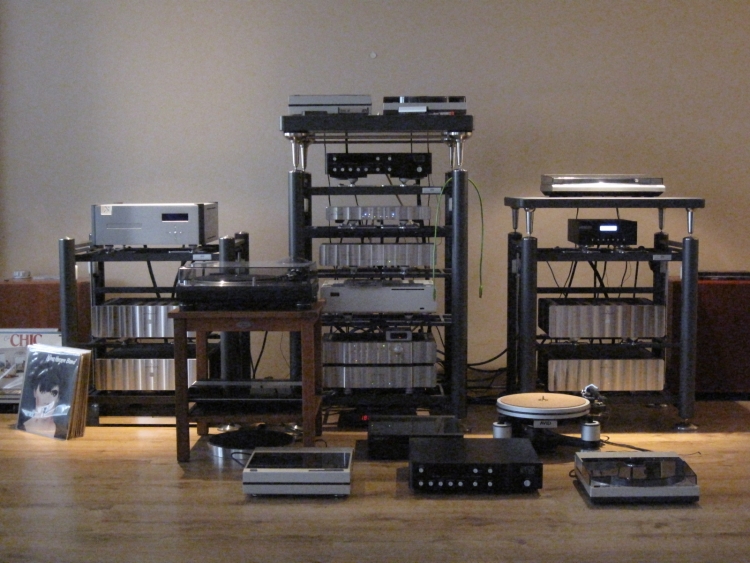
In this review, I will be comparing various turntable systems: Direct Drive, Belt drive, Linear tracking arm and Pivot arm
Technics SL1210
Technics SL-7
Pioneer PL-L1000
Yamaha PX-2
Avid Volvere
Linn LP12
Thorens TD160MKII
Avid Volvere provided by Studio Alkmaar
Linn LP12 provided by Concerto Audio
Trivial it may be, but the Kickstarter for this review (and various other reviews along with it) was a humble Technics J3 linear tracking turntable, brought along by a friend to get me started on the turntable part of the Artesania Turntable Platforms review in a time when I only used digital. The diminutive J3 is nowhere near high-end, but did already show my digital front end a thing or two about emotional involvement. The J3 in turn started a comparison between the best of the Technics Linear Trackers such as the SL7 and SL10, which eventually led to me investigating the big linear trackers of the time (~1982), such as the Yamaha PX2 and Pioneer PL-L1000, throwing in various pivot-arm players as well, such as the Thorens TD160MKII, Avid Volvere, Technics SL1210 and Linn LP12.
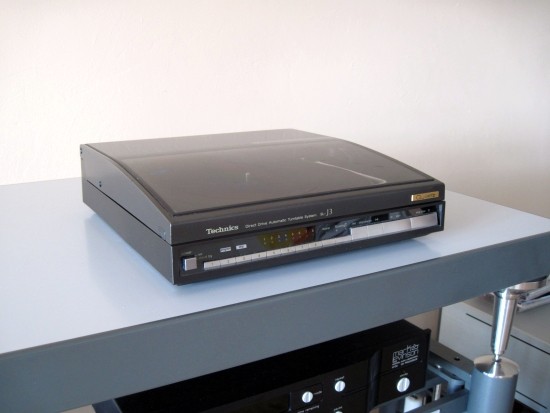
Thorens introduction
My friend JW, who has all his life been faithful to his humble Thorens TD160MKII, was amused to see me return to analog, even if it was in the shape of these seemingly gimmicky Technics turntables. Although JW agreed that the SL10 and SL7 were indeed putting up some serious competition for my best CD player (Wadia 781i), he wasn’t really convinced of their quality in an absolute sense. After all, we could only compare them to my digital sources. Although the theoretical advantages of Linear Tracking (when done well, and the aging players are still operating within spec) seem to speak for themselves, the theoretical differences between my Linear Tracking Technics SL7 and JW’s Pivot-armed Thorens TD160MKII, remained a point for discussion for some time. Incidentally the SL7 when new, cost almost double the entry price for a Thorens TD160MKII, and the SL10 cost even more. Although prices generally don’t mean much, in this case they do indicate that in spite of their toy-like appearance, they are to be taken seriously.
I have been looking for a Pioneer PL-L1000, and the same day that I found one, I also found a TD160MKII in excellent shape for a good price, and even in the neighborhood of the PL-L1000, so I decided to just pick up both players on the same trip. Even if I wasn’t really interested in owning a Thorens, at least this would allow me to make direct comparisons, and put an end to the theorizing. You see, up until the moment of comparison, I was fully convinced that my Technics SL7 would easily beat the Thorens on all accounts except for refinement and maybe treble air, but interestingly, the Thorens turned out to be a real gem. Please see the comparisons below.
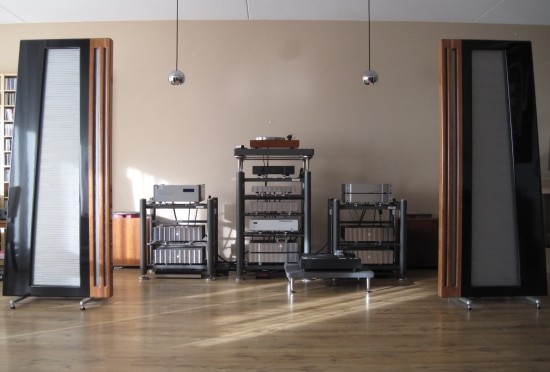
Linn LP12 Akurate introduction
Of course, when you say Thorens, automatically you think of the ultimate incarnation of the classic belt-driven sub-chassis principle, in the shape of the Linn Sondek LP12. Linn were kind enough to supply an LP12 Akurate for review, via their Amsterdam dealer Concerto Audio.
The LP12 came to existence after Thorens had already made a name for themselves for their excellent turntables and it is rumored that the LP12 was in fact based on the Thorens TD150 but improved in all aspects. Whether or not this is true I guess we will never know, but Linn themselves at least claim that their player has nothing to do with the Thorens.
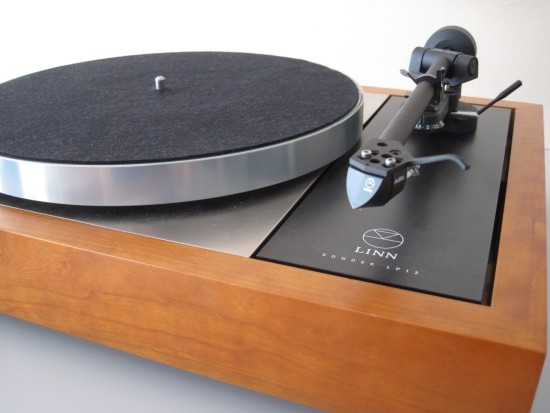
In any event, the TD160MKII and the LP12 are very similar in principle and in looks, having the same kind of spring suspension and sub chassis, and the same belt-drive mechanism, with all elements in the same place. However the LP12’s has a much higher level of fit and finish in every aspect, and much better materials are used. While the Thorens has a fiber-board cabinet, the Linn has a solid wood cabinet; the Thorens uses sheet metal as cabinet upside and sub chassis material; the Linn uses machined aluminum. The Thorens does have a proper platter, but the Linn’s platter and sub platter are smoother around the edges, more neatly polished and a little heavier. And of course the Linn has a bigger and closer-tolerance shaft and bearing, which the manufacturer claims is the biggest reason for the LP12’s fame. Finally there is the external Lingo power supply (not for the Basic Majik LP12 though) that creates an ultra-stable AC voltage, as opposed to a straight to wall outlet 230v AC motor in case of the Thorens.
The Akurate version of the LP12 uses a Linn Akito tonearm and is normally equipped with a Linn Klyde MC cartridge, but in my case I was delivered a Linn Adikt MM cartridge.
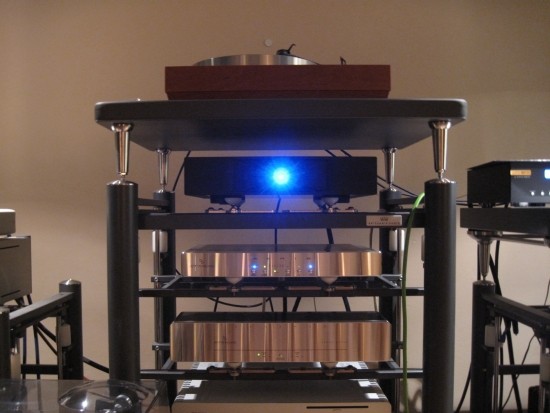
Above: The power light on the Lingo is incredibly bright. Because it was right in front of my viewing area, I temporarily covered it with a sticker.
Purpose of this review
As hinted at above, the Kickstarter for this review was actually the reviewing of the Artesania Turntable Platforms, which are used in combination with the Artesania Exoteryc audio racks. The results can be read here. But for this review, I will focus on the differences between the pivoting/linear tracking and direct drive/belt drive turntable principles. Also I will describe the absolute audible differences between all players, the most interesting question of course being which player I will like best. Will it be the mammoth Yamaha PX2 or the Linn LP12? And how does the Thorens compare to the Linn? I can already tell you that I was in for some big surprises!
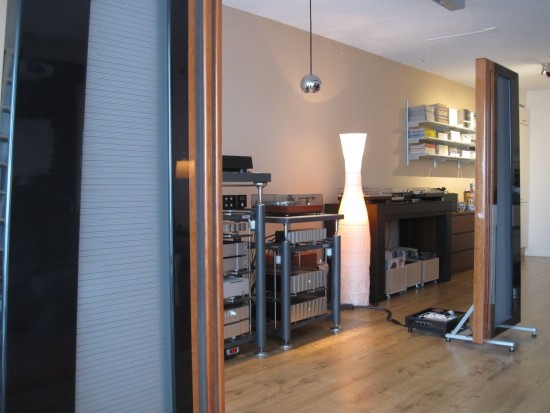
The comparison
Due to the scale of the review, I decided to involve all my audio friends in these comparisons, divided into 2 groups over two weekends. Besides being lots of fun, it also provided room for alternate opinions. As a result, the conclusion will also weigh in the verdicts of my friends. Interestingly, the conclusions were pretty much uniform, but I’m getting ahead of myself.
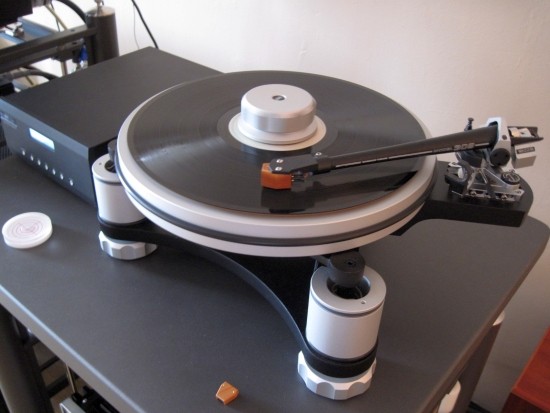
Avid Volvere
The Avid Volvere was kindly loaned to me by Ben Hoedjes of Studio Alkmaar, but it had been returned prior to this review taking place, so it wasn’t part of this group review. Nevertheless, I’d like to touch on it briefly. With its SME 309 arm, and outfitted with a range of cartridges (Benz Ace SH, Benz Ace lo, Grado Statement Platinum 1, Technics EPC202 and a Denon 103) the Avid’s most prominent sonic feature was its relaxed nature. It never sounded slow, but it also wasn’t in a hurry – its speed and drive were just right. It was never aggressive but did lean to the overly controlled side. Not that it was extremely analytical, but I found that regardless of cartridge and placement, and into the Musical Fidelity Vinl as well as into the Rowland Cadence, the Avid seemed to restrain dynamic contrasts, perhaps as a result of its clamp, without which, it cannot be operated. On all technical aspects, the Avid easily outclassed the Technics SL7 and SL10, but not in terms of involvement and sheer playing pleasure. I respect the Avid’s tonal balance, natural yet rich timbre and excellent bass, but ultimately it did not move me emotionally.
Update may 2021 – As I know now, having done an extensive Avid review, my observations above related to the tonearm and not the player. While the SME is technically fantastic, it seems that it is too controlled for my taste. I noticed the same (and more) with the Avid-Rega combination when the Audio Origami PU7 arm (12-gram effective mass version with Cardas 33ga internal wiring and super OFC external cable) turned out to make all the difference.
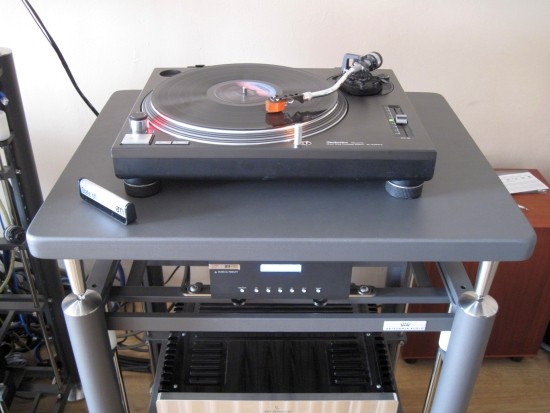
Technics SL1210
If you ask anyone what a typical turntable would look like, chances are that they’ll think of an SL1200. Enough has already been written about this ‘table, except that it sounds surprisingly nice even in an audiophile context. Although the Technics SL7 beats it easily, still the SL1210 sounds much better than you’d expect given its low price and DJ application (which it really wasn’t designed for at first). The 1210 btw is simply a 1200 with a dark cabinet and, otherwise the exact same turntable. While the 1210 is very affordable, it offers very sturdy and reliable build. I have already written more about it in the Turntable Platform reviews and the Technics comparisons, so will at this point only state that used with a variety of cartridges, the 1210 always sounds fast, dynamic and lively, as well as fluid and supple. It does not, however have a very natural timbre, sounding somewhat empty and lacking colour and substance. Also, a few of my friends find basically any turntable with a Quartz Locked Direct Drive motor to sound too impulsive and creating holes between notes where the decay on long notes falls away seemingly too soon, which is not only also the case with the SL1210, but the latter is setting the record for sounding most, and I quote one of my friends: “like an automatic gun”. The Thorens was found to sound incomparably better in all aspects including the argument above, but importantly without sounding slow.
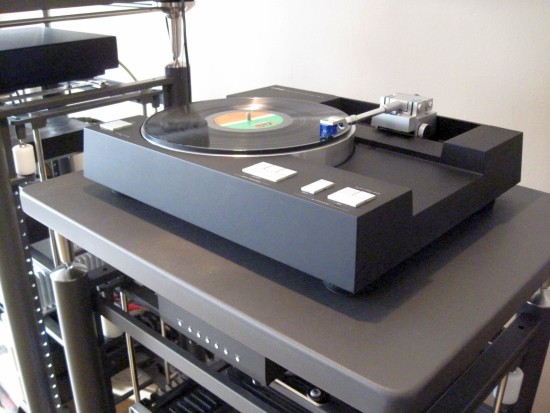
Yamaha PX-2
Due to its higher-than-average arm, this beast of a player is not happy with just any cartridge and it can for example sound a bit “meh” when partnered with a high-compliance cartridge. But when partnered correctly, this is a stunningly musically involving player, with dynamics and bass to die for. The Benz ACE SH cartridge provided the most powerful bass I have yet heard from any record player, with plenty of dynamics and power, but I found the SH, as well as the older ACE Lo ultimately to be too technical and unforgiving. A match made in heaven was found in using an Audio Technica AT-33EV MC cartridge in the Yamaha’s standard headshell, playing into the Pass Labs Xono. This combination comes close to the Ace’s balls and power, but combined with the sort of refinement and fluidity typical of the better Denon MC Cartridges like the DL304, although the latter still has better treble extension and air, which the PX2 is inherently a little lacking. Set up like this, the PX-2 beats my Wadia 781i for bass, dynamics and sheer musical enjoyment. Heck, given a good record, it beats the 781i period. Going back to CD after having listened to records all night is a proper turn down. The sound of LP through the PX-2 is so much freer from the speakers, in a living, breathing manner, with images float freely in the room, while simultaneously being firmly earthed.
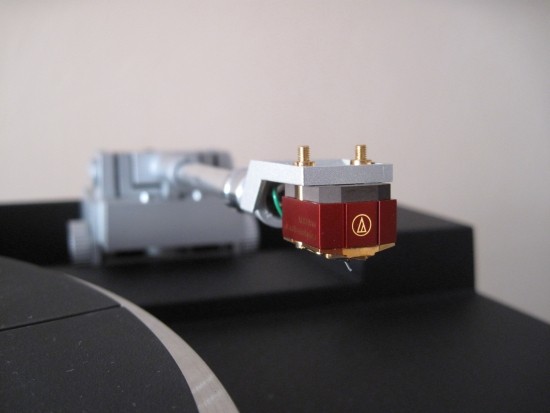
Two friends commented that while they thoroughly enjoyed the Yamaha’s sound, like the SL1210, the PX-2 portrayed some of the “almost too fast” quality, which is likely the result of their direct drive quartz-locked motors. I actually like this sense of speed and transient agility and liken it to a sound that marries the best of the analog and digital words. But it wasn’t until we started listening to the belt-driven Thorens and Linn, that I understood better what my friends meant.
On the subject of tangential tracking, I was convinced of the advantages, even with the Technics SL7 and SL10, over pivot arms. This was not only theory, but I tested this with a variety of cartridges, and it was clear that the linear trackers had much lower distortion near the end of the record than the SL1210 or Avid Volvere. That is, until I tried the Benz SH and Audio Technica 33EV, both of which seem to track almost as well as any of the linear tracking turntables, even at the end of the record. The Benz especially seems to be helped enormously by its micro ridge stylus, sounding distortion-free even on records that seem worn when playing them with other cartridges. So, it would seem that linear tracking is not necessarily better by definition than pivot arm designs, and make no mistake, it can even be worse if the adjustments are off. However a different advantage is that linear tracking turntables (the active ones at least) don’t need anti-skating, which is a benefit in itself in relation to tracking accuracy, but also makes for very precise cueing because the arm isn’t pulled sideways while being lowered.
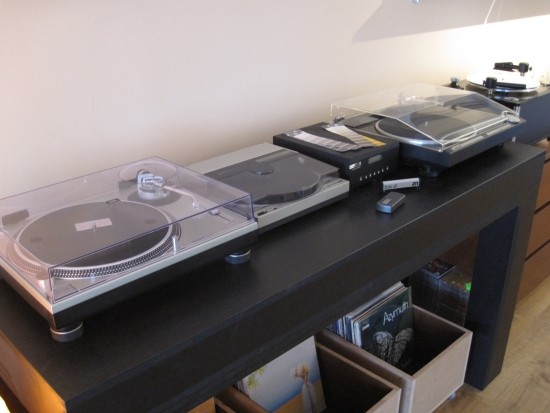
Above: the turntable table. Alas it wasn’t to be enjoyed for very long because shortly after this review I moved the audio system from between the speakers to the side of the room, and only the core system could still fit.
Linn LP12 – Preface
Linn were kind enough to loan me an LP12 Akurate for these comparative reviews, via their Amsterdam dealer Concerto Audio.
I want to emphasize that it is never my intent to sable down any product, let alone the legendary LP12. Actually, I was very much looking forward to it, and already took into account the possibility that I might fall for it and might have to get one for myself. I really had high expectations, but sadly, they did not come true.
First off, I must explain that my particular LP12 Akurate version was equipped with an entry-level Linn Adikt MM cartridge. I had asked for an MC version precisely because of this review and the higher-grade cartridges in the other players, but a Klyde sadly wasn’t available. The Adikt fitted was brand spanking new, so I gave it some 8 records of playing time before carrying out the group tests. Although the other cartridges that I bought new performed great out of the box, this may not have been enough for the Adikt. Since the turntable itself is immaculately built, I cannot imagine that the results that I heard are typical of the product, but likely down to the Adikt being of less quality than the other cartridges.
Incidentally, the LP12 was adjusted by the dealer and said to be ready for playing right out of the box. VTA seemed spot on and I also checked the VTF which I found to be too high at 2,2 grams. This is likely as a result of the transport, so I readjusted it to the Linn-recommended 1.75 gram value.
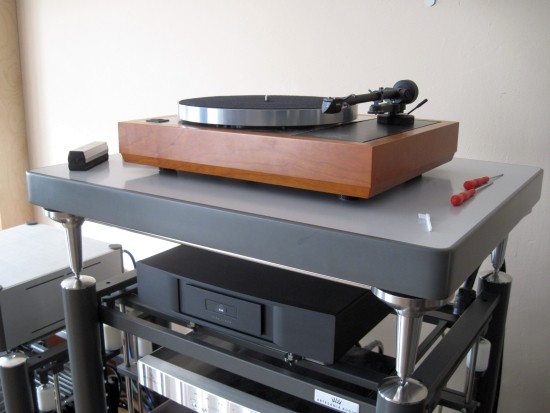
Linn LP12 – Listening
The Linn was used in stock form, with a felt mat. We arrived at the LP12 after having listened to the Yamaha PX-2, and needless to say, we were all expecting to be engulfed in richly smooth analog bliss. Well, that’s not what happened. The LP12 was also connected to the MM input of the Pass Xono phono stage, set to the recommended values. Speed was spot on, as was timing and coherence, but the bass was quite lightweight, midrange was thin and not very acoustically convincing and treble was screechy and tipped up. While it was evident that the belt-drive principle produces an entirely different and arguably more emotional sound than direct drive, overall, the added fluidity and longer sustain and more natural decay couldn’t compensate for the fact that we found it ultimately to sound very uneven throughout the frequency range as well as dynamically restrained. It was a bit like the Avid in that aspect, leaning to the more technical rather than the more emotional. Again: the story could be entirely different when using a different cartridge or perhaps even a different arm, but it was agreed with the dealer that I wouldn’t do any cartridge swapping, so I left the Adikt in place. After this experience I have asked once more for a better cartridge but unfortunately one could not be provided. I am writing this review long after the LP12 has been returned to Concerto but I still wonder what it would have been like with another cartridge.
I did do some web research and found that throughout its life, all the LP12’s components have been upgraded to ever tighter tolerances using higher-end production techniques, and it has been stated in several places that the old ~1977-ish LP12’s are very different from today’s LP12’s. The original was apparently known for its slightly overly colored and thickened bass and romantic sound, combined with PRAT to die for. The current LP12’s apparently sound much more neutral and indeed I would not call the LP12 I listened to euphoric by any stretch of the imagination. Could it be that in the process of making it more perfect, the LP12 lost some of its original magic? I hope that a follow up review will provide some answers.
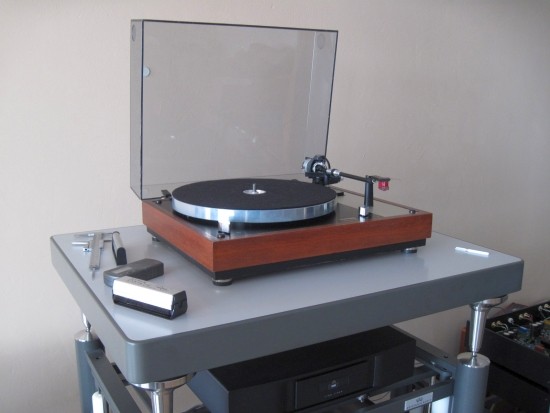
Thorens TD160MKII
The Thorens was used with a felt mat, very similar to the one used with the Linn. This is very important because the mat has a huge impact on the sound. Felt or Rubber for example is a world of a difference, rubber sounding very bouncy and dynamic, and felt sounding more relaxed. The Thorens was fitted with a Denon DL110 high output MC, into the MM input of the Pass Xono, set to the same values as the Linn. After the Linn, we really weren’t expecting much from the humble Thorens. Imagine then our surprise when it turned out to sound absolutely gorgeous! Like the LP12, the Thorens has excellent speed and a very fluid, organic feel, with very long sustain on notes, and by now the absence of the effect of quartz lock direct drive effect was finally dawning to me, and I have to agree that belt drive does indeed seem to be responsible for a more organic and emotionally engaging sound, in case of the Thorens as well as the Linn, without tipping over into an overly relaxed sound.
But it’s not only the platter motor system I’m sure. Tonearm construction and weight no doubt also have a large influence. For example the heavy and very solid arm on the Yamaha providing very solid bass as opposed to the very light arm on the Thorens providing exceedingly good low-level detailing and treble air.
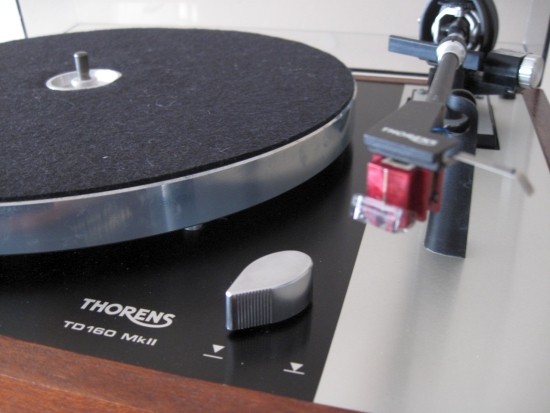
On a practical note, for the arm lift, the Thorens uses a knob on the solid part of the turntable, which makes cueing very easy, whereas the Linn uses a lever on the arm, right on the sub-chassis part, which makes it much harder to cue and lift the arm without causing the sub-chassis to start wobbling and moving the arm in turn.
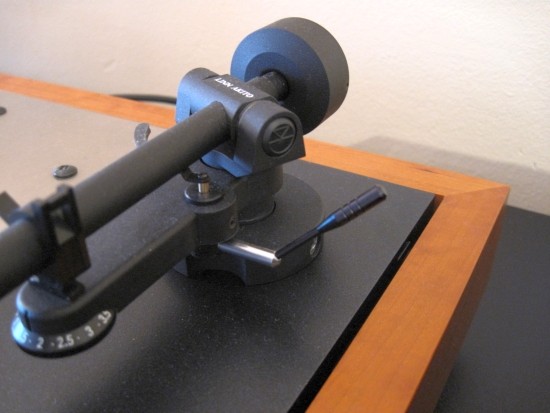
The Linn arm seems to be very solidly made but instead of providing a powerful bass as is the case with the Avid Volvere (with SME 309) and Yamaha PX-2, the Linn sounds thinner and faster, and more like the arm on the Thorens. The weird thing is that the Thorens with its very lightweight arm, does manage to sound fuller in the bass, with richer tonality overall than the Linn. Sure, the Thorens is also somewhat light in the bass, and definitely does not come near the Yamaha in terms of bass, or overall power. But the Thorens does manage to combine agility and sustain, dynamics and fluidity and transient attack with an utterly smooth and relaxed sound. And it sounds utterly natural with perfect timbre. To our 8 pairs of ears, instead of the more logical other way around, the Thorens took all that was good in the Linn, and improved on it. Needless to say, even if they admitted that the Yamaha can sound mightily impressive, JW and one other friend firmly voted for the Thorens’ sound over the Yamaha’s.
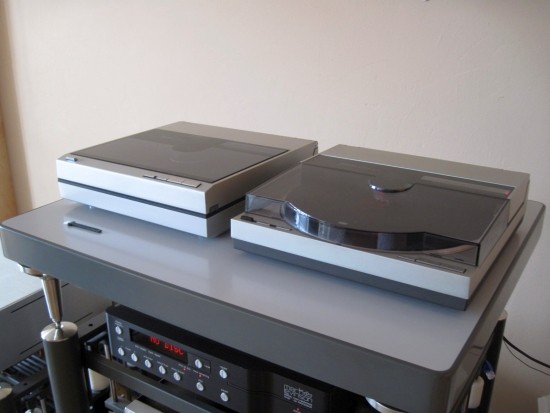
Above: SL10 on the left and SL7 on the right.
Technics SL-7
Here’s another surprise. What I will write now, will seem ridiculous, even to me, had I not heard it for myself.
Up until these listening sessions, I had been listening to the SL7 with a cheap to moderate range of needles. The best ones yet were the original Technics needles, having better tracking and more refined treble than all aftermarket samples tried, including the 50 euro Tonar replacements. Incidentally, the cheaper ones are to be avoided in linear trackers because even if they are T4P and are made to conform to the standardized requirements, their cantilever length is not standard. Indeed I found ridiculously large differences in cantilever length, making for a permanent mistracking on the Technics arms, because their fixed position arms don’t allow moving the cartridge in order to compensate for needle tip position. With all the 7-25 euro replacement stylii this was clearly audible as treble sibilance. The Tonar was the best of the bunch, but it was still not as refined and airy as the original stylii.
Technics SL-7 with Jico SAS
Enter the Jico SAS stylus. Jico come highly recommended as makers of replacement stylii for virtually all cartridges. Jico stylii come in two flavors: standard elliptical and SAS. Together with a friend, I ordered both for the Technics EPC202 cartridge, to make for a nice comparison. SAS is a special kind of needle shape, somewhat similar to Shibata but even more extreme. The standard Elliptical Jico already surprised us with superb tracking and treble refinement at least equal to the original stylus. At around 18 euro this is a no-brainer. Then came the SAS version. In a word: wow! It has similar excellent tracking and refinement, but the added amount of detail that this stylus retrieves from the groove is insane. It’s like stepping up several levels and listening to a proper high-end turntable. I kid you not!
Even with replacement stylii, the SL7 already sounds very musical and surprisingly full, with excellent drive and pace, and with its original Technics EPS 540 stylus it sounds even more well-balanced in addition to being very smooth and forgiving of mediocre records. The sense of overly fast pace is less than with the SL1210 and because decay on long notes has much longer sustain than on the latter, this doesn’t bother me and it’s really been a pleasant listen right from the start. But with the Jico SAS, it comes ridiculously close to the Yamaha PX-2 in all aspects except bass fulness and timbre. It comes so close in fact, that the PX-2 can sound a little underwhelming when switching back to it, this is substantiated because the SL7/Jico SAS combo also has more extended treble and better articulation in the bass. The Yamaha does have deeper and more powerful bass, though. It’s more solid and rooted, and as said, it has a much more natural timbre. That last aspect is the one area in which the SL7 most noticeably lags behind the rest. But remember: the PX-2 has a high-grade Audio Technica MC cartridge while the SL7 has a standard MM cartridge. It is unreal how well it performs. When I look at it, set up next to the giant PX-2, I still cannot believe it. But we all heard it, and were perplexed.
Remember what I wrote above about solid and heavy arms versus light arms? Well, the SL7 has a pretty light 10cm arm which would normally result in a very controlled sound, but somehow it sounds more fluid and relaxed than most other players. In spite of the player being direct drive, it comes closer to the presentation of the Thorens in terms of fluidity, air and sustain than the other players, the Pioneer excluded. Of course, the Thorens does sound even more agile and refined, and also has longer sustain, and of course a more natural timbre, but the Technics does beat the Thorens for bass and drive. In a sense, the SL7 with Jico SAS, combines the best of the Thorens and Yamaha.
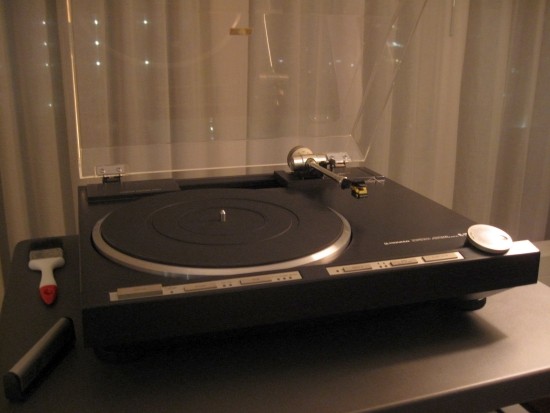
Pioneer PL-L1000
Like the Avid, the Pioneer was also a player that wasn’t listened to in the context of this review, but because of the interesting findings, I want to write about it here anyway. At first it was tried with the Benz Ace lo, and this definitely not a good match: the sound was thin, edgy and reminded me of how the Technics J3 sounded in terms of unnatural timbre and dynamic differentiation.
After this initial experience, I had left it alone for a while, until recently, after I purchased a new Audio Tecnica AT150MLX MM cartridge and tested it first in the Pioneer. Even when connected to the affordable Musical Fidelity M1 Vinl, it now sounded nicely full. Even if it still didn’t have the acoustically convincing timbre of the Thorens or Yamaha, with the M1 Vinl it was now performing better than the Technics SL7 with Pass Xono!
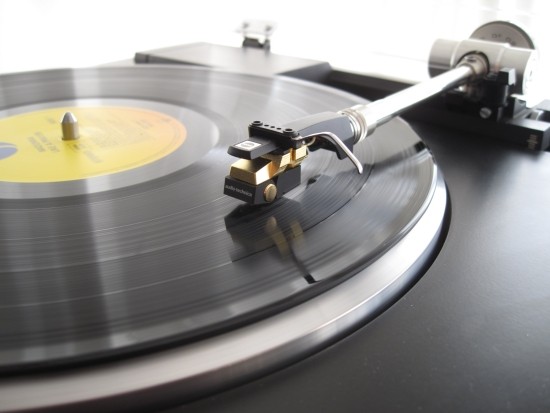
The Pioneer uses an interesting arm drive mechanism in the shape of a so-called linear magnetic motor, which is similar to older Sony CD transports, where a coil is attached to the laser assembly, which moves freely within or around linear permanent magnets. In the case of the Pioneer, the arm assembly rolls on 3 metal wheels over 2 steel bars with very little friction. While the Yamaha PX2 wins out in bass power, dynamics and natural timbre, the Pioneer easily beats the Yamaha in terms of treble air and extension as well as overal fluidity and sustain. It’s still no Thorens in the latter aspect, but to compensate, it has the least obvious direct drive characteristics. Of course, I am still comparing apples and oranges, with 2 different phono stages and 2 different cartridges but I do know that the Pass is definitely better than the Musical Fidelity in every aspect, and the cartridges are of the same make. Heck, the Pioneer’s AT150MLX is an MM design while the Yamaha’s AT33EV is an MC design, so go figure.
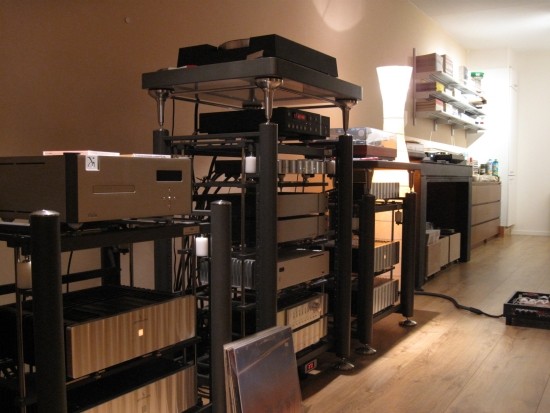
Conclusion
So many turntables – so many outcomes. I’m not a vinyl expert and don’t claim to have all the answers, nor do I think I have quite covered all the variables, but I did carefully try all kinds of placement options for all players and tried all the settings on all phono stages for all cartridges while making sure that the other circumstances remained similar. For example, all turntables were connected to the same outlet on the same mains extension block, using pre-marked phase for every turntable. Would you believe that phase matters, as much even on a direct AC Thorens as for any of the Quartz Locked DC Technicses?
In conclusion, I do think that the above observations tell at least a big chunk of the story. I still have a lot to experiment with, especially in terms of arm-cartridge matching, but the differences noted so far between Direct Drive and Belt Drive, between Tangential and Pivot, as well as the observations between the various arms, hopefully, are meaningful food for thought. With this introduction, I hope to have provided an interesting point of view on the wonderful world of LP playback. It has been an interesting journey, which I’m sure is nowhere near finished.
Videos on the Hifi-Advice YouTube Channel
Thorens TD1601 turntable compared to TD160 Super, TD160mkII, TD125mkII, and Linn LP12
HFA Front Page
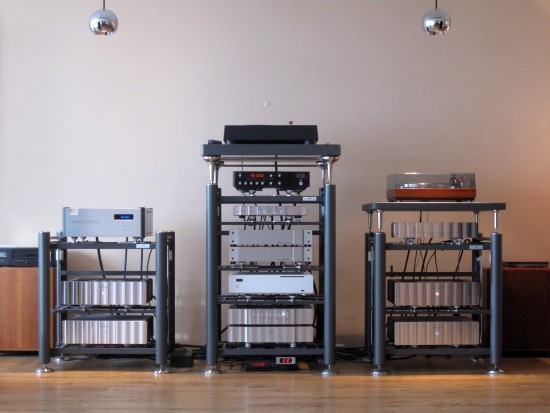
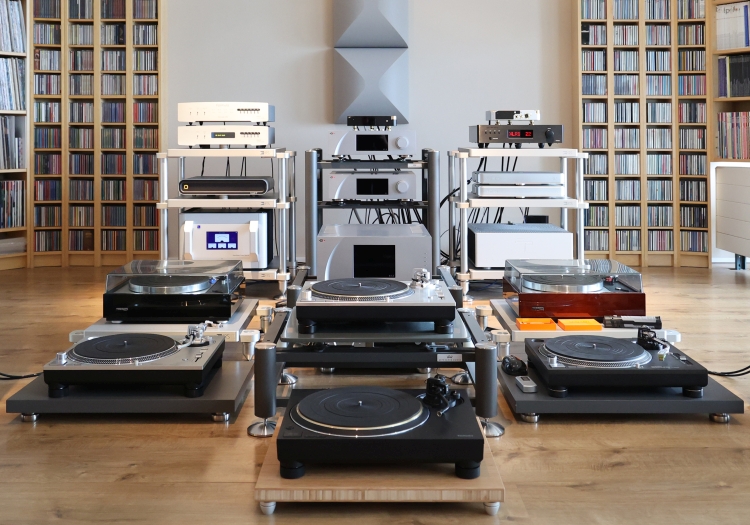
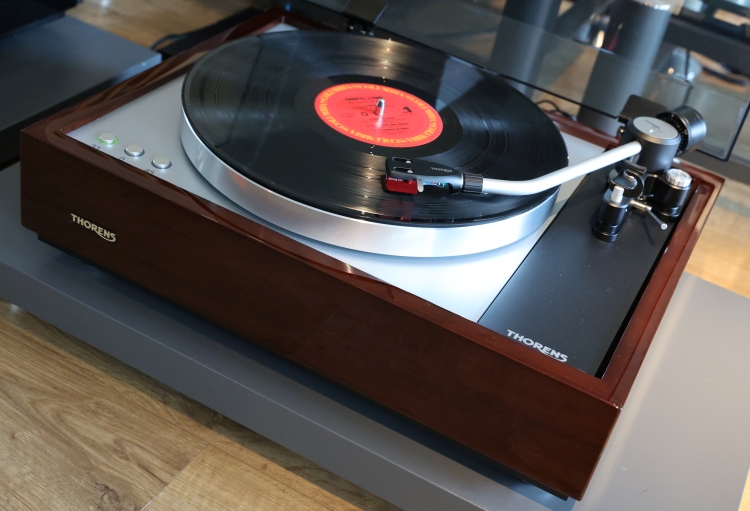
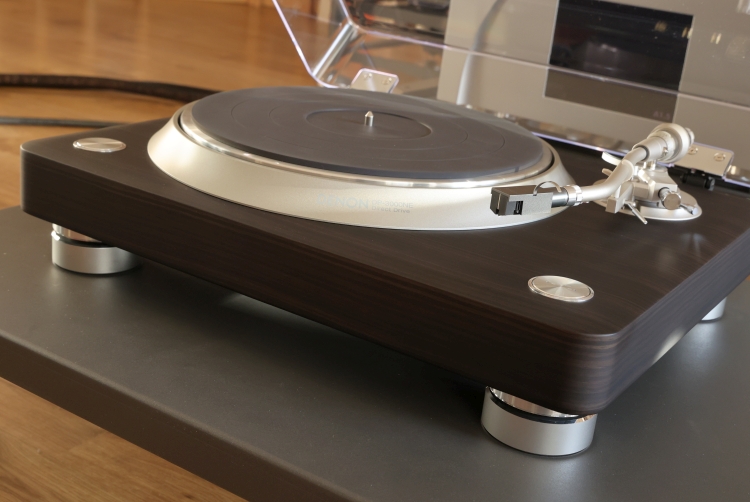
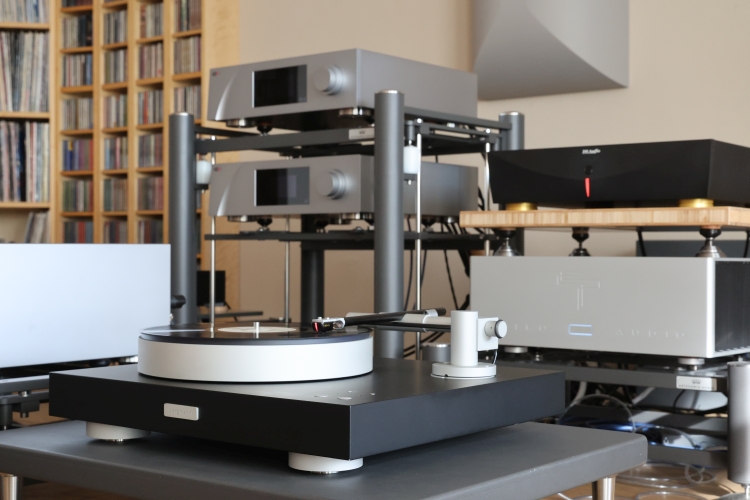
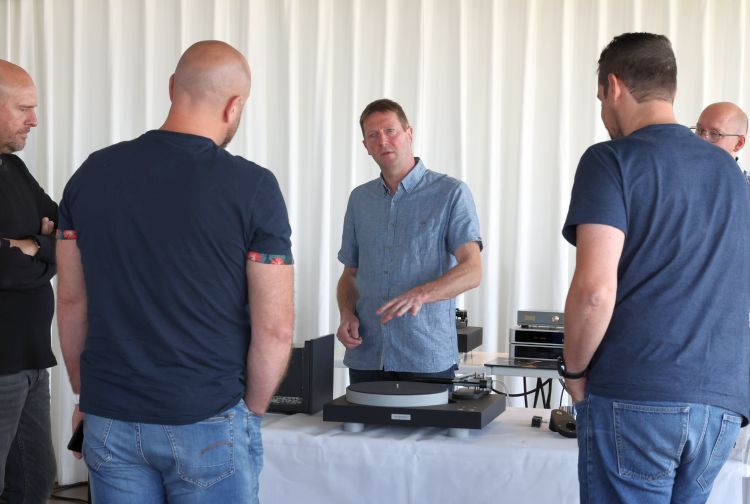
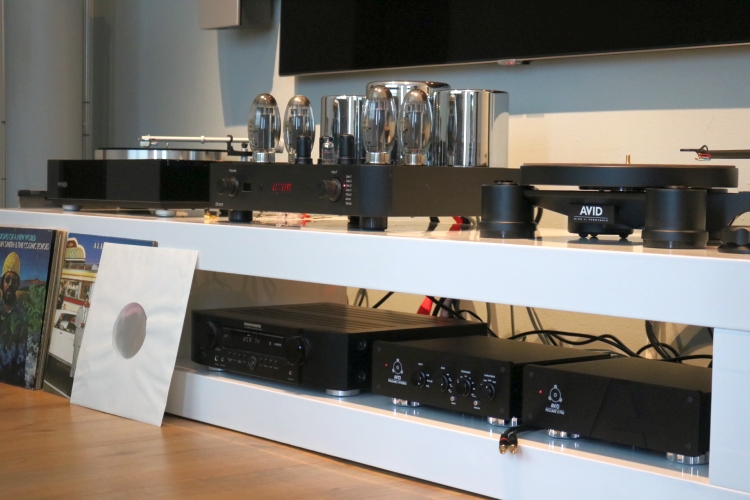
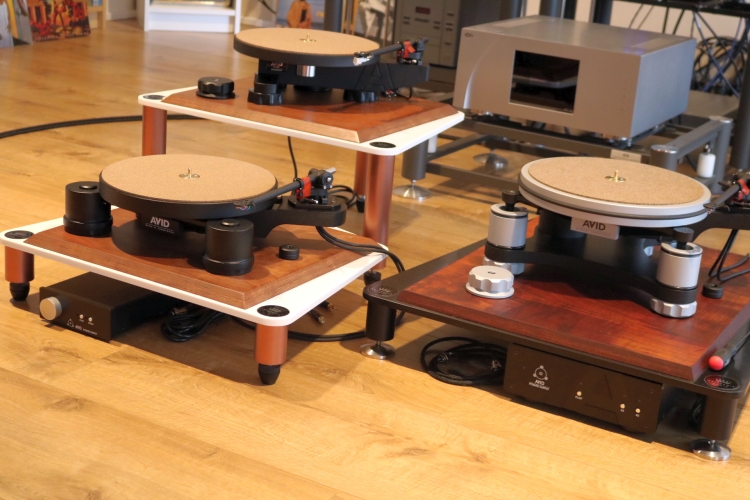
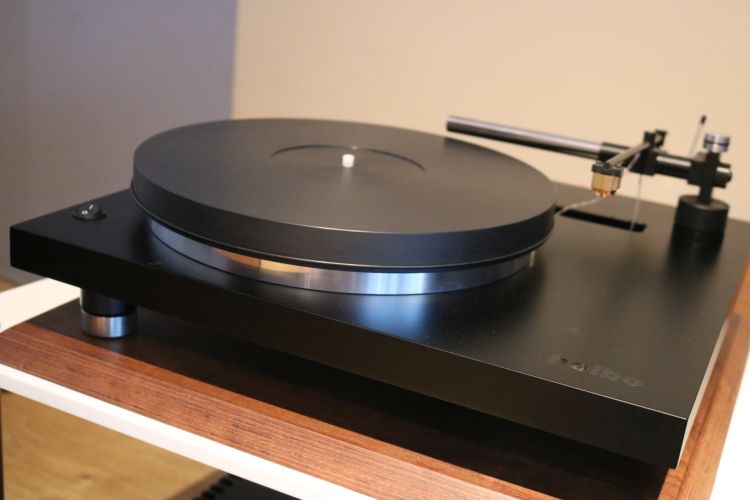
Thanks for a good “field review” Mainly i liked that Thorens puts up a good performance against the Linn. I´ll put off any Linn purchase for now and keep my Thorens….and my japanese quartz wonders. But about the Jico stylus. Where did you get them from? On Ebay there is many sellers claiming to sell Jico but they come with no original box etc. So it´s not easy to spot wich are genuine Jico. The ones i have bought for my old Shures and Audio Technicas doesn´t sound that good.
Mojn Ole
Hi Ole, do please note that the Linn LP12 I reviewed had a very very basic arm and cartridge and I was asked not to swap it for one of my own cartridges. While this led to an underwhelming result, I’m quite sure that the Linn should be able to provide better sound than the Thorens TD160MKII, provided it is outfitted with a better arm and cartridge, which admittedly makes it a costly matter.
Jico can be purchased direct from the factory: http://www.jico-stylus.com/
To my knowledge, T4P Jico SAS replacements are better than the orginal Technics styluses and I would imagine that they are on par with good AT styluses. That said, Shure does have a sound of its own and it would not surprise me if Jico replacements sounded different than the original Shure.
Thanks.
So you did not get the Jicos from an EU dealer? The local VAT and import duty here in Denmark, makes purchases outside the EU expensive. The Linn had an basic arm, but so did the Thorens. It´s a TP 16 isotrack as i recall, but still quite decent. Compared at the price, Thorens a well enginered performer i think.
Mojn Ole
Indeed I ordered straight from Japan. They might exist but I am not aware of any local Jico dealers. VAT and duties are considerable indeed, in my case around 30% of the retail price, but still in audiophile terms it does not amount to crazy numbers. TP16 is also basic you’re right, but of very different mechanical construction as well. They’re just very different sounding arms I imagine. What I am trying to say is that the big issue here will have been the cartridge/arm match and that the Linn TT itself should actually be better than the TD160 MKII. The way I was expected to listen to it however it just did not present itself well in my test. All that said there’s no way around concluding that classic Thorens TT’s indeed offer great value for money.
BTW they can be modded with a new base and a different arm and so can end up souding entirely different than when stock. In addition to the stock TD160MKII I now also have a refurbished TD160B with SME3009 II in a gorgeous brand new, heavy console. Time permitting I will issue a comparative review. At this time I don’t want to comment on the sound too much, suffice to say that the balance can easily be shifted very audibly and although improvements can be had in several areas, the coherence might also get lost to some extent. But I’m not done experimenting with this yet and again the arm/cartridge marriage should not be underestimated. The bottom line is (same as when changing a loudpeaker crossover) to be careful when modifying a good sounding stock component.
Thanks for a very well written review. I enjoyed reading it, especially since I have owned a couple of the turntables mentioned.
Interestingly, I moved from linear tracking to Torens, then Linn. That Linn is now for sale, also through Concerto here in Amsterdam (small world).
In my opinion the Adikt is good, but you also described its shortcoming very honestly and accurately imo. That being said, it probably would have benefited from a wee bit of additional break-in before critical listening.
I now listen to an old idler drive tt, something to consider for your follow-up review?
Jan
Hi Jan, Although I still keep 3 linear tracking Technics players around and also still have the Pioneer PL-1000, I sold the PX-2 because I did not use it enough and I was afraid that its belts would deteriorate. Most listening is done on a refurbished Thorens TD160 B with Origin Live arm and Denon DL-304 cartridge. Somehow though I still miss some of the speed and slam of the DD ‘tables. It’s an ongoing thing that I don’t put enough time in to make enough progress.
You may be right that the Adikt needed more running in but I had to work with what I had and was asked not to change any settings and not to change the cartridge. It’s a shame because I think that otherwise, the LP12 is likely a very good turntable.
Indeed the Idler drive experience is still missing in my analog adventures. If I come across such as ‘table then I will surely report on it. I just can’t promise that this will happen anytime soon.
An important question for a long time vintage record collector like me that do enjoy playing his old cherished 45’s home. Late in my records collector’s life, I finally took some time to study the “phono” question deeper. And that I did with a lot of beliefs and superstitions at first on what a good turntable should be.
Coming from the DD turntable “à la SL-1200” absolutist world, it took to twist my arm to test a “wobbly” old belt “pulling” driven Thorens turntable fitted with a “shaky” SME tonearm. But once the stylus did hit the groove, the sound made all those prejudgements vanish and the understanding of it all evolved to change.
If the Ariston RD11 is undoubtedly a copycat of the Thorens TD150, the Linn LP12 is as well (with the then Thorens single point “V” shaped bearing introduce in 1972) and then the RD11 ‘S’ are that of the TD160. They do have “heavier” build and finer finish than the TD’s, but then the LP12 more so than the RD11’s as well.
Sadly I am not lucky enough to test and compare most of those great turntables, Still I can rely on discerning reviews to “picture” them. And after some researches, readings and unveiling of what all the fuss on those Ariston and Linn turntables is all about, it was with relief that I got to get that there is not much SO significant.
Now in the end, I would tend to doubt that comparing a TD160 with a LP12 fitted with the same tonearm like an early SME3009 and a DL-103 for example will clearly show such dramatic improvement that would justify a hype of undefined qualitative like “better” and/or “greater” in perceptive sonic definition anyway.
And even less so if the Thorens should be fitted with a solid wood plinth and thick base. Because indeed it is understandingly one of their weakest point. But for the rest, like the use of different metals and attention to the finish, it shouldn’t affect the sonic characteristics so much as to justify those assertive non-factual claims.
For example, to this day I’ve read so much about their pretending “revolutionary” and “superior” single point bearings. But I can’t find any rational explanation on what exactly makes it all of that… And those turntables should indeed work, as they look; great ! But so does my now DIY tweaked “hybrid” Thorens TD14X BTW…
It’s not the Ariston or Linn turntables that I object to. It is the hype, the regional preference and mystery in the history behind it, that once revealed leaves no room for mythology and show a mere human tragedy. Since Thorens was the creator of those designs, I can only even more naturally favor my Original Thorens turntable.
Thanks for your interesting post, Timmy.
Indeed many people forget that Thorens started out with Ideler Drive turntables, only to move to Belt Drive later. Although I have not yet heard an Idler-driven turntable in this system yet, I do think that they make for a very different sound than typical belt-driven turntables, which one might prefer, or not, based on the user’s preferences. There might be something to say for both, but I imagine that Belt drive is simpler and thus possibly lower maintenance. I really should go find out for myself sometime.
I also agree that there is too much hype going on with some brands. The Thorens TD160 MKII is built much lighter than the LP12 but as you mention, the differences do get smaller when changing the plinth and base. I have confirmed this for myself using a stock TD160 MKII (same as in the review) and a refurbished one with new plinth and base, as well as refurbished parts, initially with SME 3009SII arm, and currently with an Origin Live arm.
However, as I noticed during tests while mounting the Origin Live arms, there are very large audible differences between the various arm boards. See the Origin Live review for more info. Thin metal sounds thinner, heavy aluminium sounds more weighty and wood sounds most organic, if less precise. Knowing this I’d imagine that ultimately the TD-160’s relatively thin sheet metal sub platter might be a limiting factor. Now, does that justify the MAJOR price difference? For me, it is mostly about the emotional charge, the feeling of music really sweeping me away and entertaining me, not necessarily about the highest levels of accuracy, but ultimately this is a question for each person to answer for him/her self.
Cheers Christian, on the arm board matter, I am now lead to believe that it has to be a “better” matching choice accordingly rather than a universal this and/or that. I still have my acrylic one and while doing my SME3009 ‘Improved’ conversions into heavy and heavier mass my very low compliant cartridge DL-102 gained in definition and after the cables and wires upgrade my sound won in depth, detail and clarity.
This allowed me to start and experiment headshell’s materials. And then I asked myself why not try the armboard’s materials ? First I tried a DIY beech wood one which muddied the sound instantly. Then I had an original vintage SME cast alloy one but it sounded too bright for me and it was even straining the Thorens’ suspension with it’s extra weight. I then put back my acrylic armboard and I was back on track.
My guess is that the alloy armboard should work better on some “regular” SME tonearm. Lighter than mine anyway plus one should still have the bedplate rubber grommets that, I like many who have the acrylic armboard, got rid off. So this quest let me where the less “noble” material actually works out the best for my heavy converted SME tonearm.
Nice post, Timmy, thanks.
Wow! That was an interesting review, especially your conclusions on the Linn table. To imply you need a better arm and cartridge on it to sound better than the thorens?
I thought the new Akito was considered a good arm considering it’s probably double the price of the entire thorens table. I was considering purchasing the akurate lp12 but you definitely got my attention for now.
Indeed I feel that the LP12 was definitely held back by the cartridge and maybe the arm, too. The Thorens was found to sound much more enjoyable but it certainly did not do everything better. For example the Linn sounded tighter and tonally more neutral. A standard TD160mk2 is not a high end machine but it sure can make music in a very appealing way.
Bare in mind that in Christiaan’s impression is likely more on the cartridge choice that he thought held the tonearm back. He was barely questioning the tonearm itself and it’s match with the turntable if ever.
Classic matches are not mindless. And unexpected good matching combinations do happen occasionally. Even against prejudgements, knowledge and understanding in physics and sonic knowhow.
So price and prestige are not necessarily relevant even in the phono world. I still believe (never heard one yet) the LP12 to be great turntable that, as my Thorens TD14X “Hybrid’N’Tweak” DIY, sounds “open, airy and neutral”.
And I love the way Christiaan presented the Linn in his answer as it “sounded tighter and tonally more neutral” to him. Just like my Thorens did improve through my tweaks with a better belt and heavier combination of mats.
Really enjoying your shoot-outs. Might be a bit late in joining the party, but I recently had a play restoring an early Garrard 401 with a solid teak top deck (54mm) and stacked hard-wood ply underneath (also 54mm). The 401 is bolted to the teak and two cut outs allow the arm-boards to penetrate down to the lower stacked ply. After much research I ended up using Delrin (5mm) for the top of the arm-boards with a box like construction from oak wine barrel wood doweled into the stacked ply. The whole teak upper is also doweled into the ply lower deck as well, anyway without getting too involved in the details I ended up using a deer hide mat as my original one got lost while the the 401 was being restored. When I finally got around to ordering a new replacement mat, wow! What a difference in slam and full bass! I had also being playing around with old Elac idlers and I kept wondering why I was missing the leading edge attack with the Garrard, which the re-plinthed Elac 50H had, and even the 770H in original box plinth demonstrated, admirably. Just shows, how the weakest link can end up being the bottle neck, restricting the sound.
I have a Technics SL7 with EPC 205 Mk3 Cartridge fitted from new, has the original Boron Cantilver Stylus, used to belong to my father. I bought a new Thorens TD309 player and tried it with a few cartridges, Roksan Chorus Black and Shure V15 III, the thorens I find very dull to listen to and it wasn’t giving me that Vinyl sound I expected. Anyway, the Technics blows the Thorens out of the water for me in all respects and I find the Technics very exciting and emotive to listen to! Tempted to try the same technics cart in non P mount on a new 1200G….
Different people want different things from audio components:-) What I associate with vinyl may be different than what you do. Thorens turntables also take some TLC to get just right. But I totally get what you are driving at and there is a fundamental difference between belt-drive and direct drive, or Thorens and Technics, for that matter. But in the end, all that matters is that we have fun, right?
Yes that’s right, my main point is I was surprised how capable the SL7, I think it helps that mine is fitted with one of the best if not the best P mount carts you can get.
People are often surprised when hearing the SL7 with a good cartridge, me included. You just don’t expect such a tiny (but very heavy) unit to perform in such a high level.
Christian Punter pin points it down as we all have different ears and so different expectations for our phono playback quality. I truly love my Thorens TD160 and it’s SME tonearm both fully DIY tweaked. Much more than my previous SL-1200…
And although I don’t know these “modern” days Thorens turntables, I’ve read enthusiastic reviews of that model from reliable source saying that it truly benefits from higher end cartridge like Benz MC’s.
Indicating that it’s tonearm effective mass would be of the medium toward heavy effective mass. And such tonearm should not benefit high compliance cartridge like the Shure V15 III. The Roksan maybe a bit better though but…
Trying to sell the Thorens at the moment without much luck.
Maybe I’ll give it another go by adding a linear power supply and a different cart. I just added a Linear power supply to my phono stage and it’s really made a huge difference!
I slightly wonder If really I’d like another DD, maybe splash out on a 1200G technics or something.
The big move from owner to owner seems now to have mostly passed and the Thorens TT value is dropping again. But you should still be able to sell it at some point. After all, their quality is everlasting. While I have not heard the 1200G, I wonder if it really is that much better than the old 1200’s because the design is still so very similar. If you take the plunge, do let us know how it goes!
It seems that there are some confusions in the text between TD166 and TD160 in a few places, probably mistyping….For instance, in one place the title says 166, while the picture depicts the TD160…
Thanks for the hint! This was indeed a typo. All cases concerned the TD-160MkII. I now corrected this in the article.
Thank you for letting me know that I’m sitting on a gem. I was about to exchange my Thorens TD 160MkII for something more modern and expensive but maybe I keep my faithfull old servant from 1984 and smarten it up with new cartridge, felt mat and belt. And upper most a phono stage which I so far never used. Before I had an old Yamaha-receiver but now I own a Denon PMA 1600 capable with MC so less limits with upgrading. So you think that Denon DL 110 and a Pass Xono would match?
The Pass Xono is very neutral and should match well with a DL110. I would also encourage you to try a more advanced stylus shape such as MicroRidge/Microlinear or Fine Line/Line Contact. See also the extensive Stylus Shapes article on this site.
I’m not sure if you realise, the Denon DL110 is not a standard elliptical stylus. It is described by Denon as a “special elliptical” is in fact a fineline/ line contact stylus first introduced for CD-4 (Quad) playback on the DL 103-S in the mid-70’s. The “Special” description is the key here, (probably a mis-translation), under a microscope it bears a remarkable similarity to the Ortofon OM-30, and is puported to be grain oriented and highly polished. It certainly throws a wide soundstage beyond the speakers. Some prefer to load it at 1-10K rather than 47K and due to it’s lower output (1.6-2V) it could do with a little gain as well (or just turn the volume up).
Hi David, I am aware of the “special” moniker and should probably have highlighted that more clearly in this comparison. In any case, in my experience, the “special ellyptical” Denon carts I tried do not produce detail or realism at the level of a good modern Fine Line or MicroRidge cart.
Thanks for great advices and info, Christiaan! How do you judge Denon DP-3000ne in comparison, the turntable I considering replace the Thorens with?
It’s hard to say anything definitive without a direct comparison, and it depends on what turntable you ask me to compare the Denon with. However, in generic terms, I think it is safe to say that, in case of most classic Thorens players with standard arms, the Denon will sound more full-bodied. But it’s relative and also depends on the arm/cart marriage.